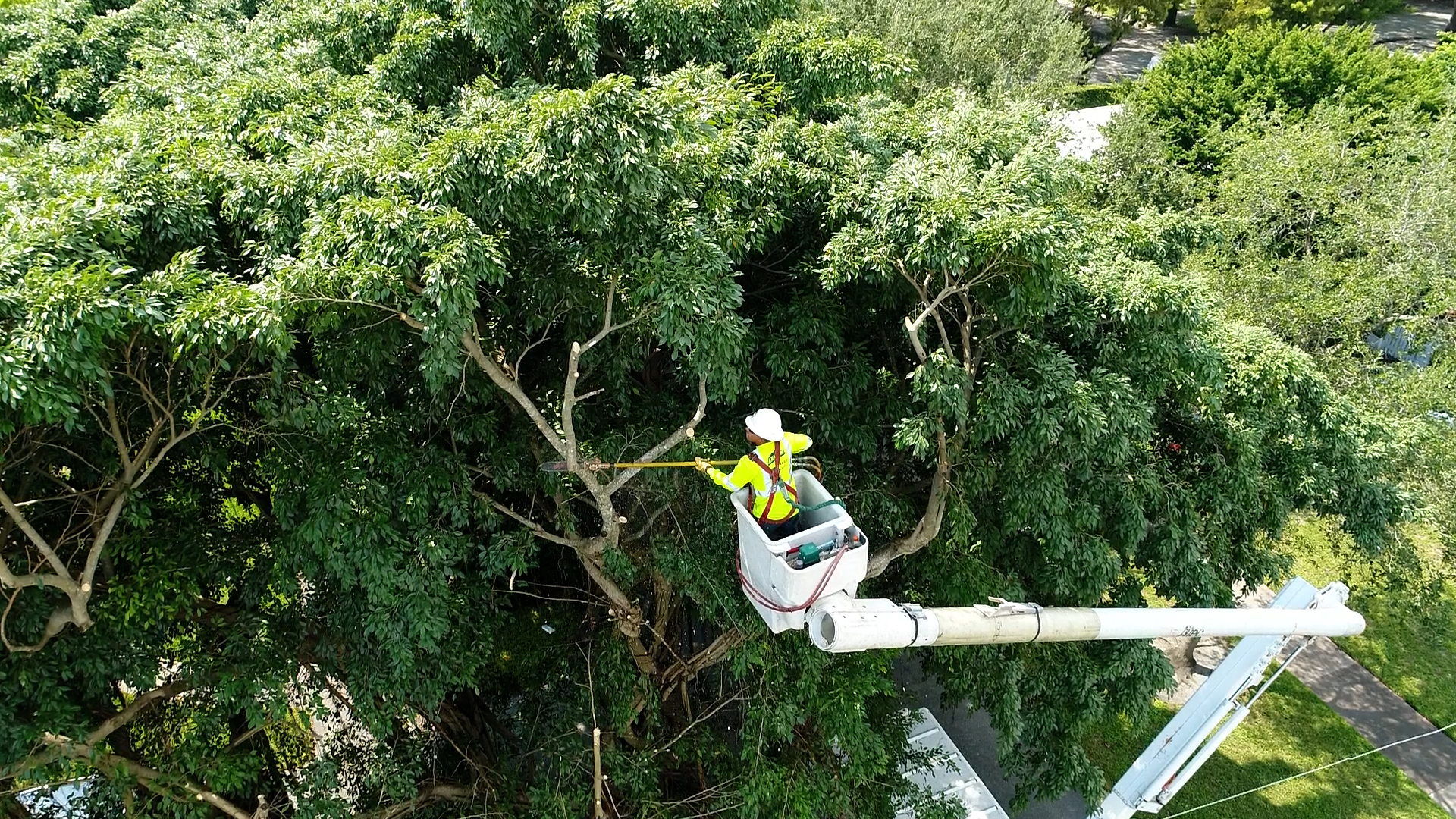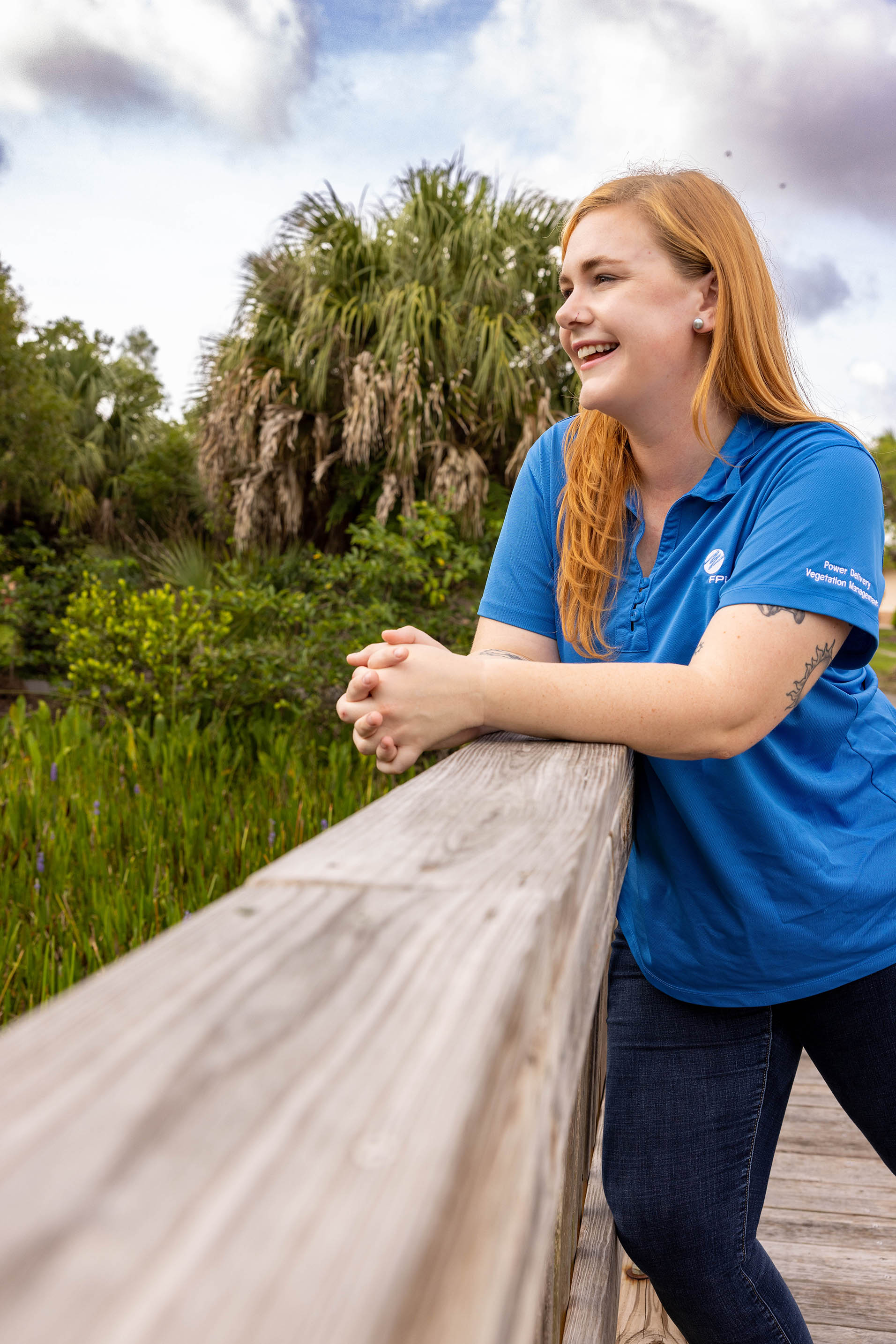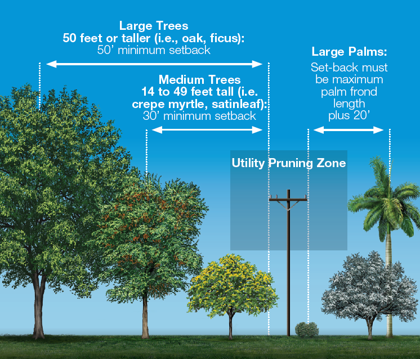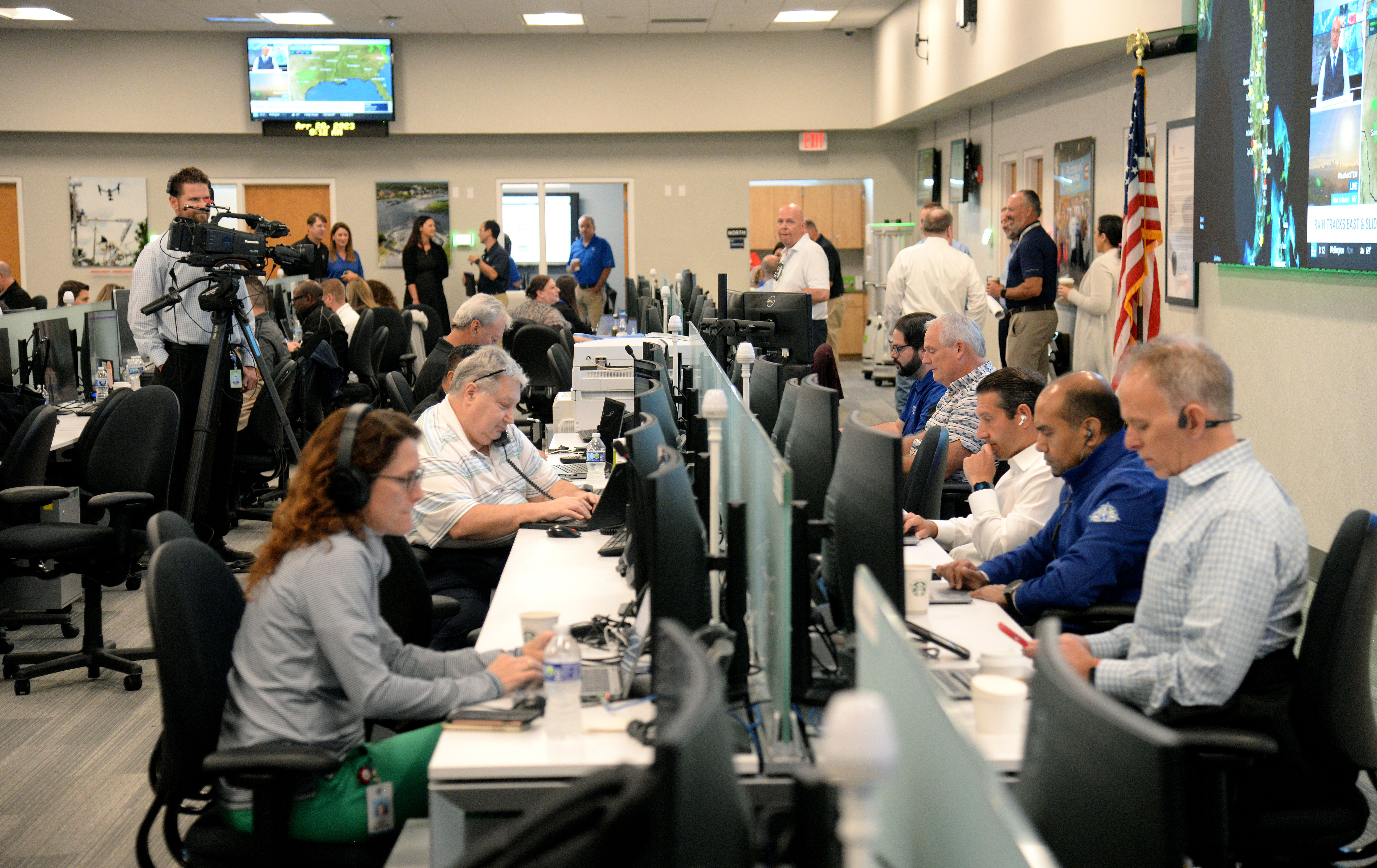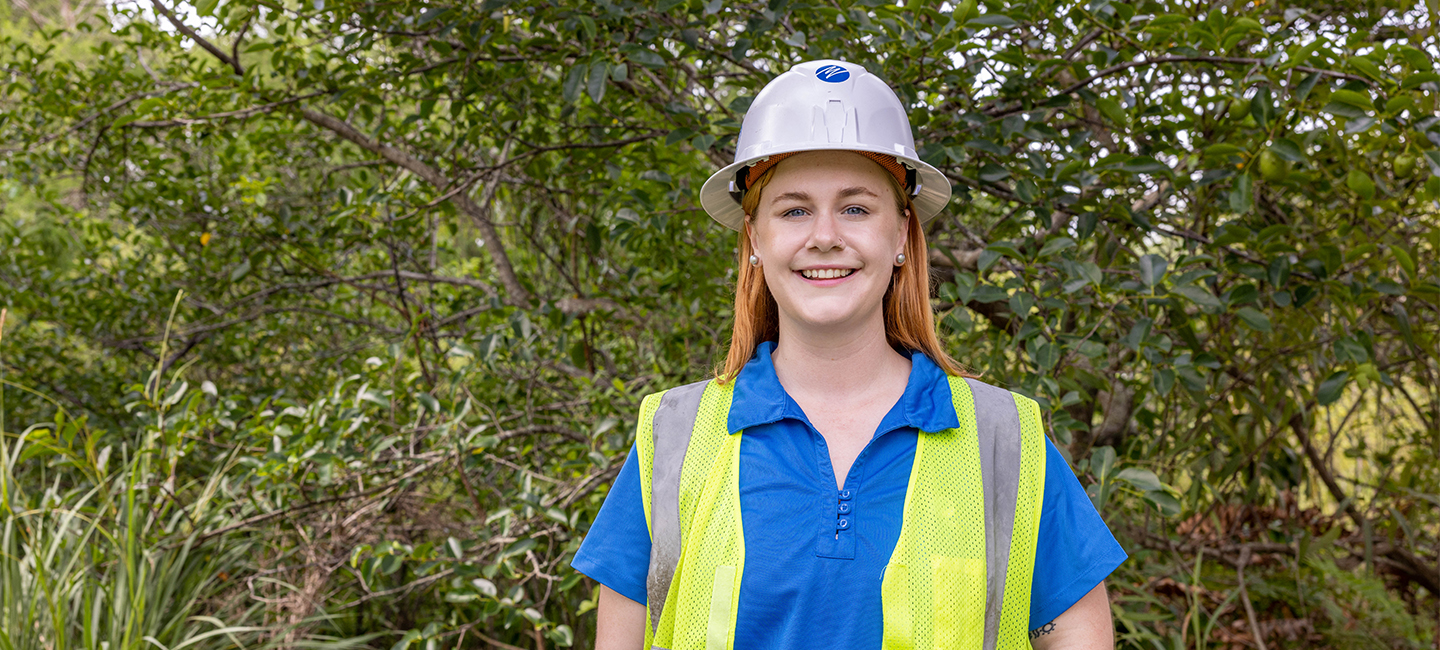
PLANTATION, Fla. – Ask Erin Schreck: if a tree falls in the forest, does it make a sound? And the arborist will answer with a quick and decisive "yes."
“It’s actually pretty loud,” she said. Schreck witnessed it on a camping trip in Sequoia National Forest when she saw a towering Pine tree crash to the ground. She’s also seen it in her day-to-day job as a utility forester, responding to natural disasters like wildfires and hurricanes.
As a senior arborist for Florida Power & Light Company (FPL), she helps manage the trees and plants growing near 25,000 miles of power lines each year. Schreck plays a pivotal role in the utility's vegetation practices, including directional pruning, a trimming method that protects the health of trees while helping them grow away from power lines.
“Loose tree branches, overgrowing palm fronds and other vegetation near power lines are a leading cause for power outages,” Schreck said. “By trimming these beforehand, we can prevent power outages and the risk of flying debris during high winds.”
Her role intensifies during hurricane season, the six-month period between June and November when hurricanes and other tropical systems are a potential threat in Florida. But it’s essential for FPL to remain vigilant year-round as non-tropical storms and severe weather can strike at any time.
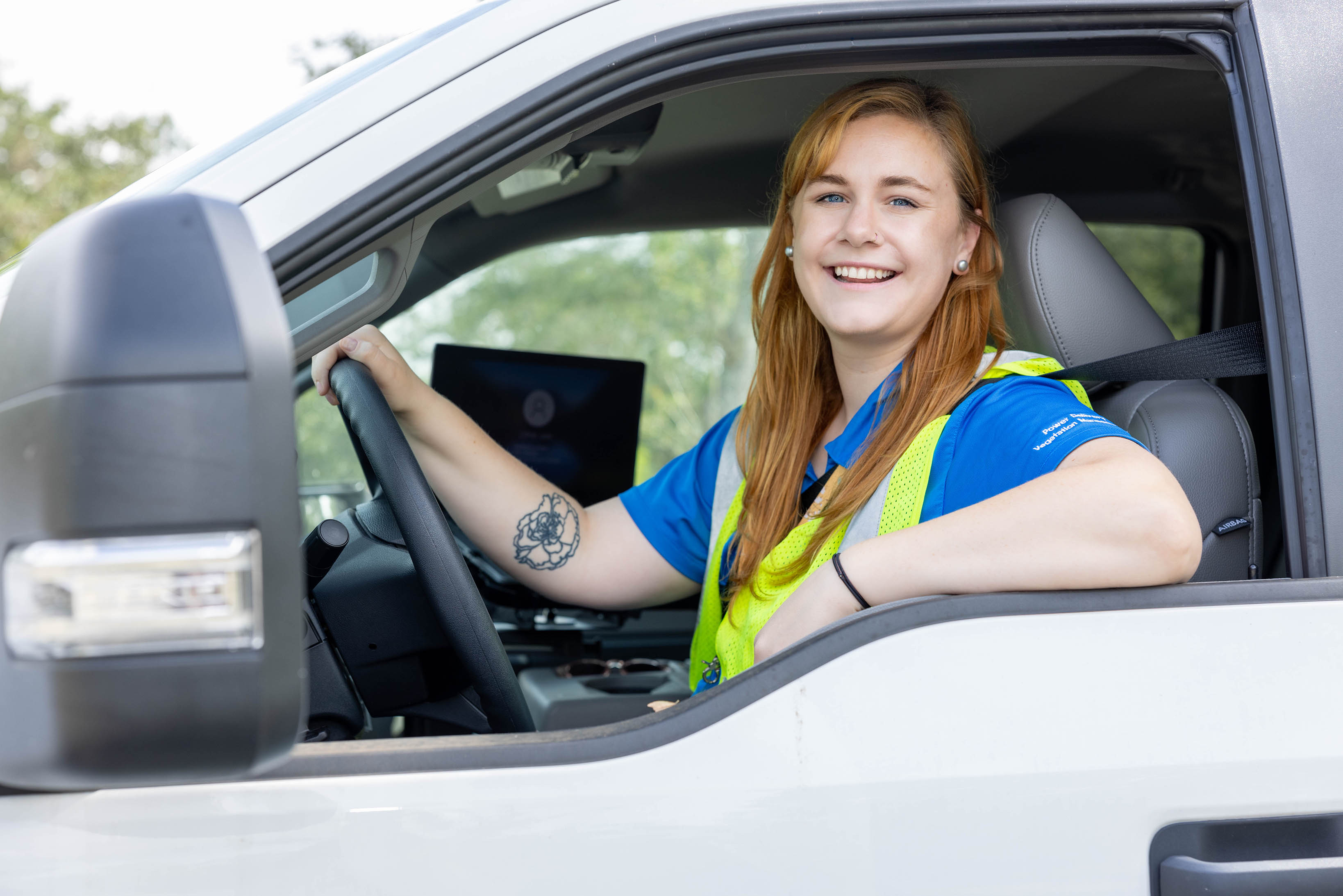
“Preparing for hurricane season is not a checklist for our company; it's a fundamental mindset as part of our duty to serve customers,” Manny Miranda, FPL Executive Vice President of Power Delivery, said. “No system is hurricane-proof, but the investments we’ve made to build a stronger, smarter and more storm-resilient energy grid enable us to get our communities back to normal much faster after a storm. This includes our extensive program to maintain vegetation from our thousands of miles of power lines.”
Preparing for a natural disaster is Schreck’s specialty. In her career, she’s responded to more than 10 of them including Florida hurricanes and California wildfires. Her career path formed in 2012, when Hurricane Sandy, a late-season catastrophic storm, wreaked havoc on her hometown of Long Island and other cities in New York.
“It decimated our coastlines, and I was really moved by people’s effort to restore the beaches and our coastline ecosystems,” Schreck said. “They all worked together to restore the environment the closest they could to its natural form so that other people could enjoy it.”
Last September, she was marked by another storm: Hurricane Ian impacting Florida’s west coast. The Category 4 storm made landfall in Lee County with catastrophic winds, storm surge, flooding and tornadoes.
Schreck worked 16-hour days back-to-back while sleeping and living out of an FPL staging site, one of the 38 temporary work locations outside of immediate impact zones. A site can accommodate upwards of 1,800 workers, with various utility crews traveling from out of state to help.
“I'm always taken aback at the phenomenon that is storm preparation. A lot of structures and buildings were no longer there after the hurricane,” Schreck remembered. “It was desolate, but somehow we were able to create a mobile city in this disaster area overnight. FPL had fully working facilities, restrooms, offices, internet and printers to help us get this community back on its feet.”
A response like this is only possible through preparation, Miranda says.
“Every day we aren’t responding to a storm, we are preparing for one,” he said. “Our employees have annual drills preparing for hurricanes and our year-round preparation helps minimize outages.”
This strategy goes hand in hand with helping the community prepare as well. Schreck works with municipalities and customers year-round to help them understand the importance of planting the right tree in the right place, away from power lines, as well as how to properly maintain and trim them safely. This can help reduce power outages.
Safety is a cornerstone of FPL’s commitment to its customers and employees.
The company urges that only specially qualified and trained line-clearing professionals conduct work around power lines and poles. If homeowners hire a qualified tree trimmer to safely clear vegetation near residential power lines, they should call FPL to schedule their power temporarily shut off. This free service is available by calling FPL at 1-800-226-3545.
When on the field, Schreck looks for opportunities to inform people, especially those who may have recently moved to the state of Florida.
FPL also urges people to stay at least 10 feet away from neighborhood power lines and 30 feet away from larger power lines. When picking fruit, trimming trees or vegetation, carefully look for power lines. Anyone or anything coming into contact with a power line can be seriously injured or killed.
“It’s also important to remember, don't trim trees and shrubs as a storm approaches or after a hurricane warning or watch is announced,” Schreck said. “Sometimes people don’t know this, but trash pickups are usually suspended and trimmings can become dangerous projectiles propelled by the storm's high winds.”
She also tells customers to call the number above if they have questions about vegetation, so they can speak to a professional.
“We can help grow trees to make sure we enjoy them to their fullest extent,” she said. “I hope to be a steward of the environment, helping other people learn to love it as much as I do.”
